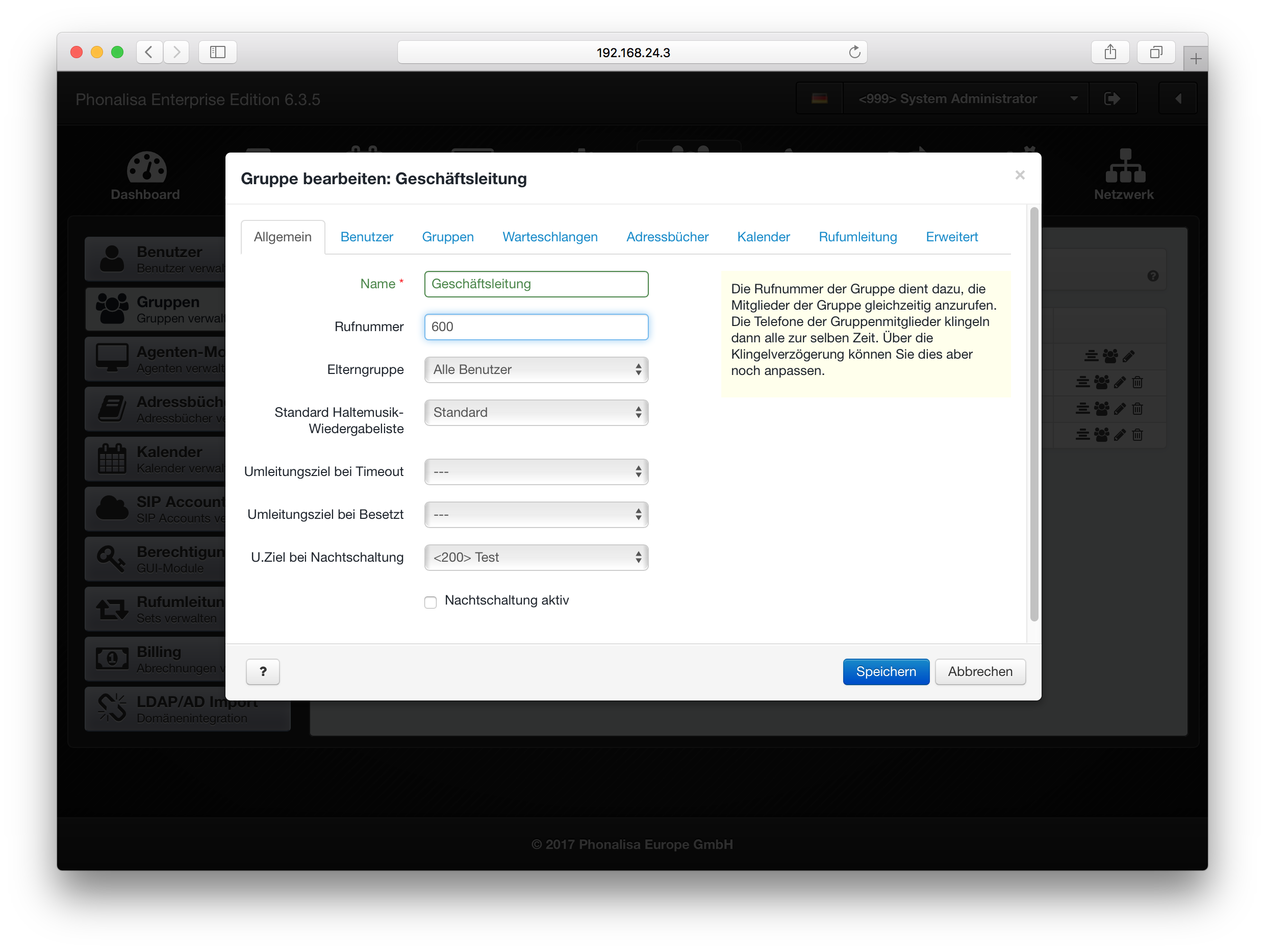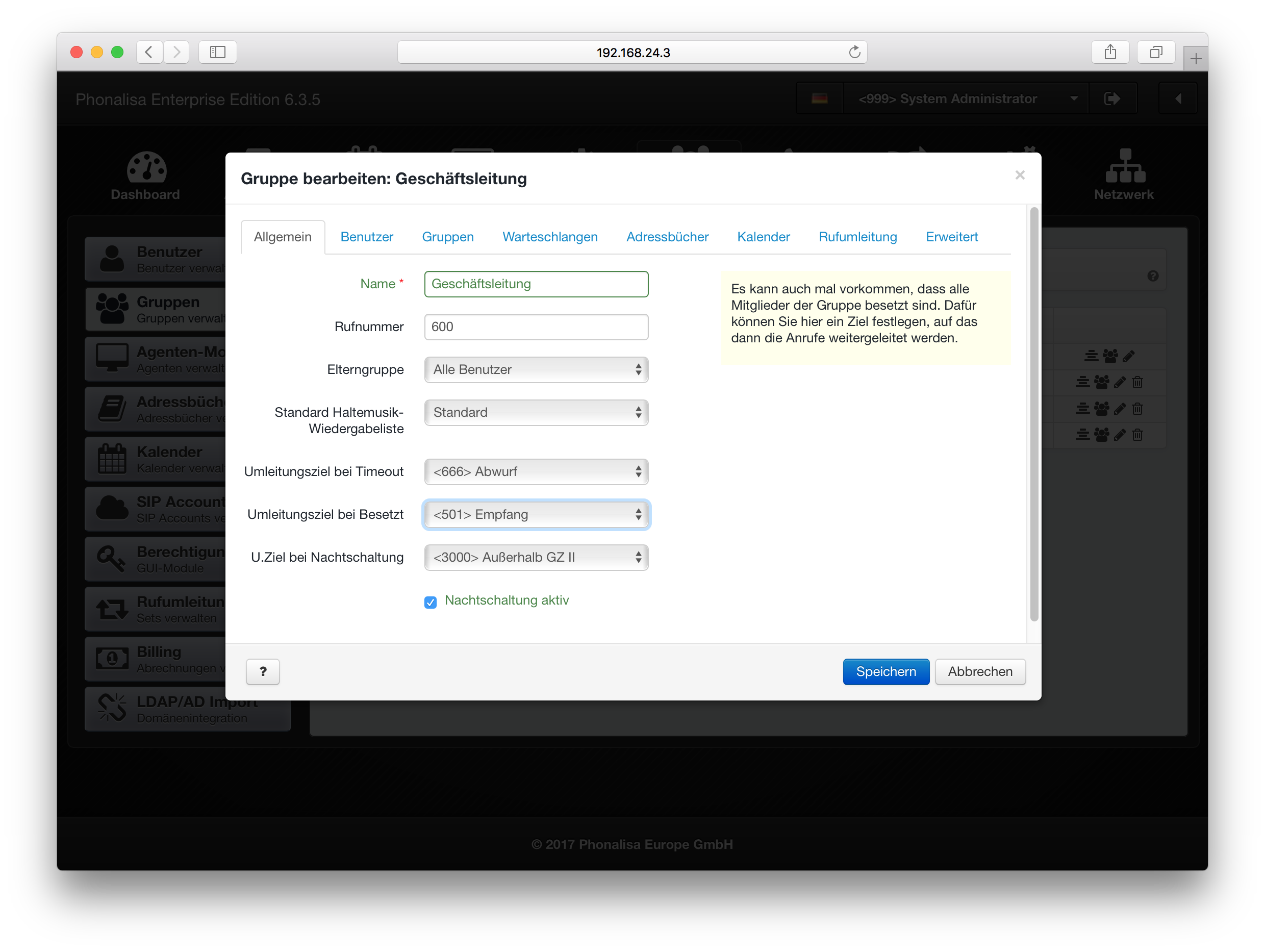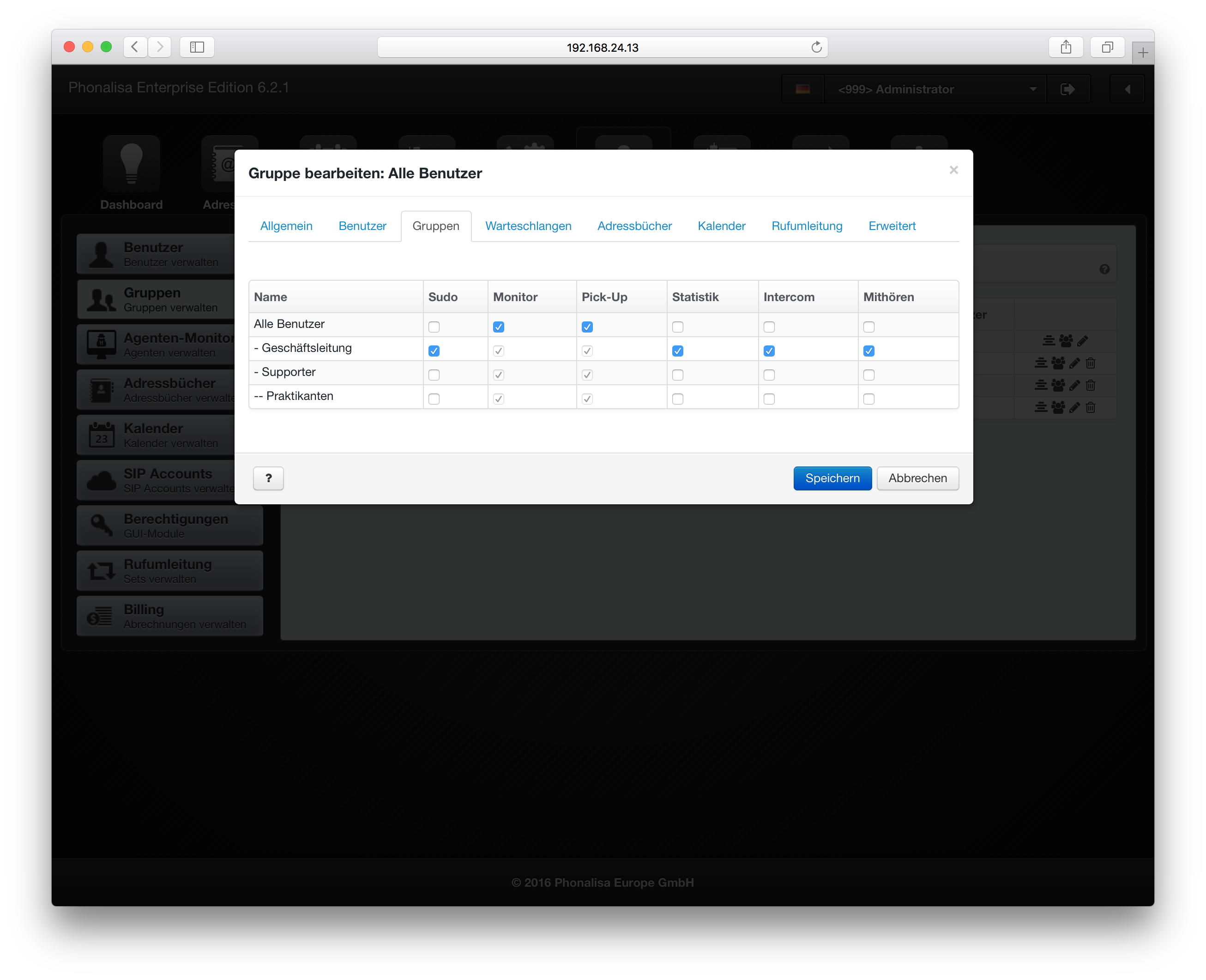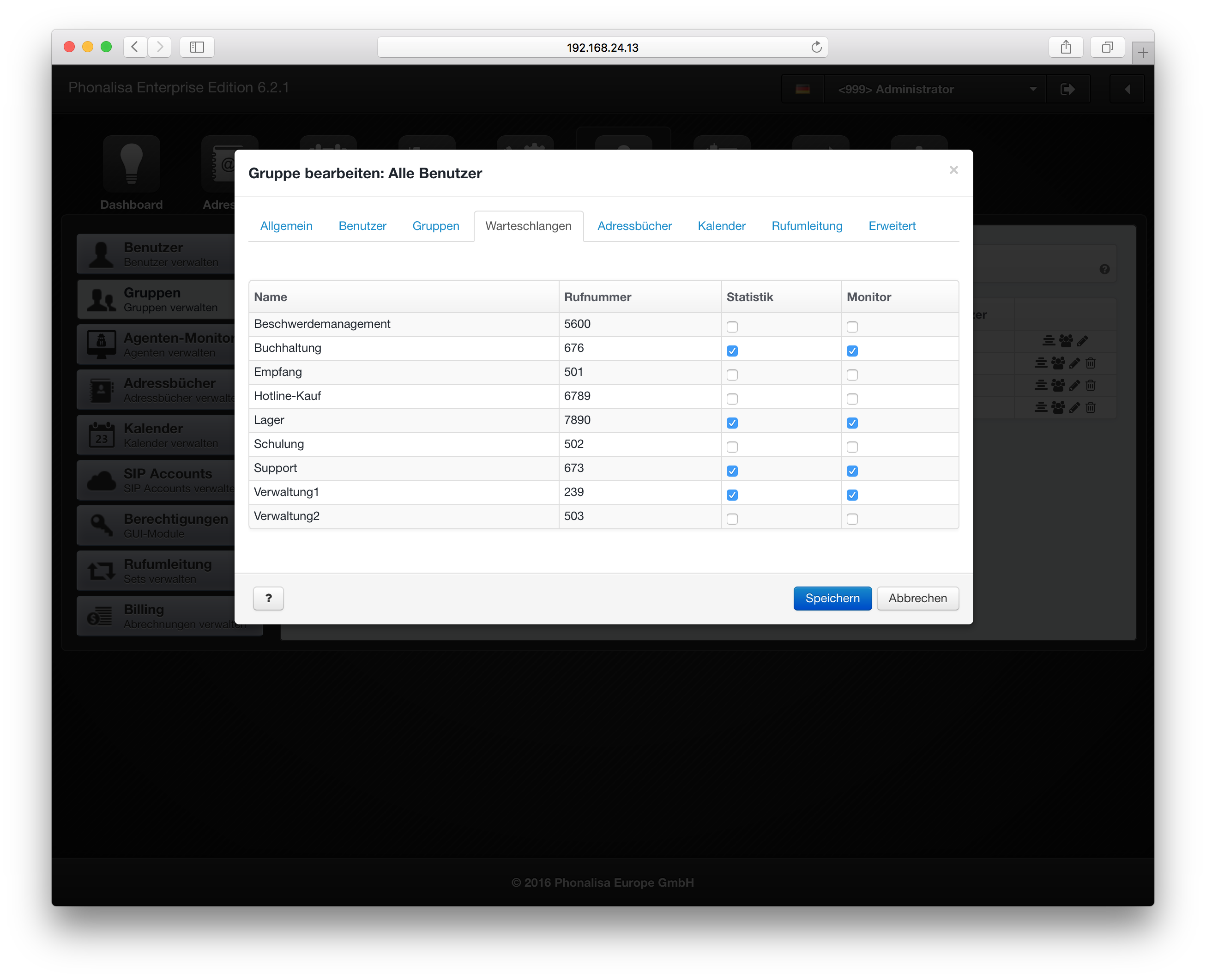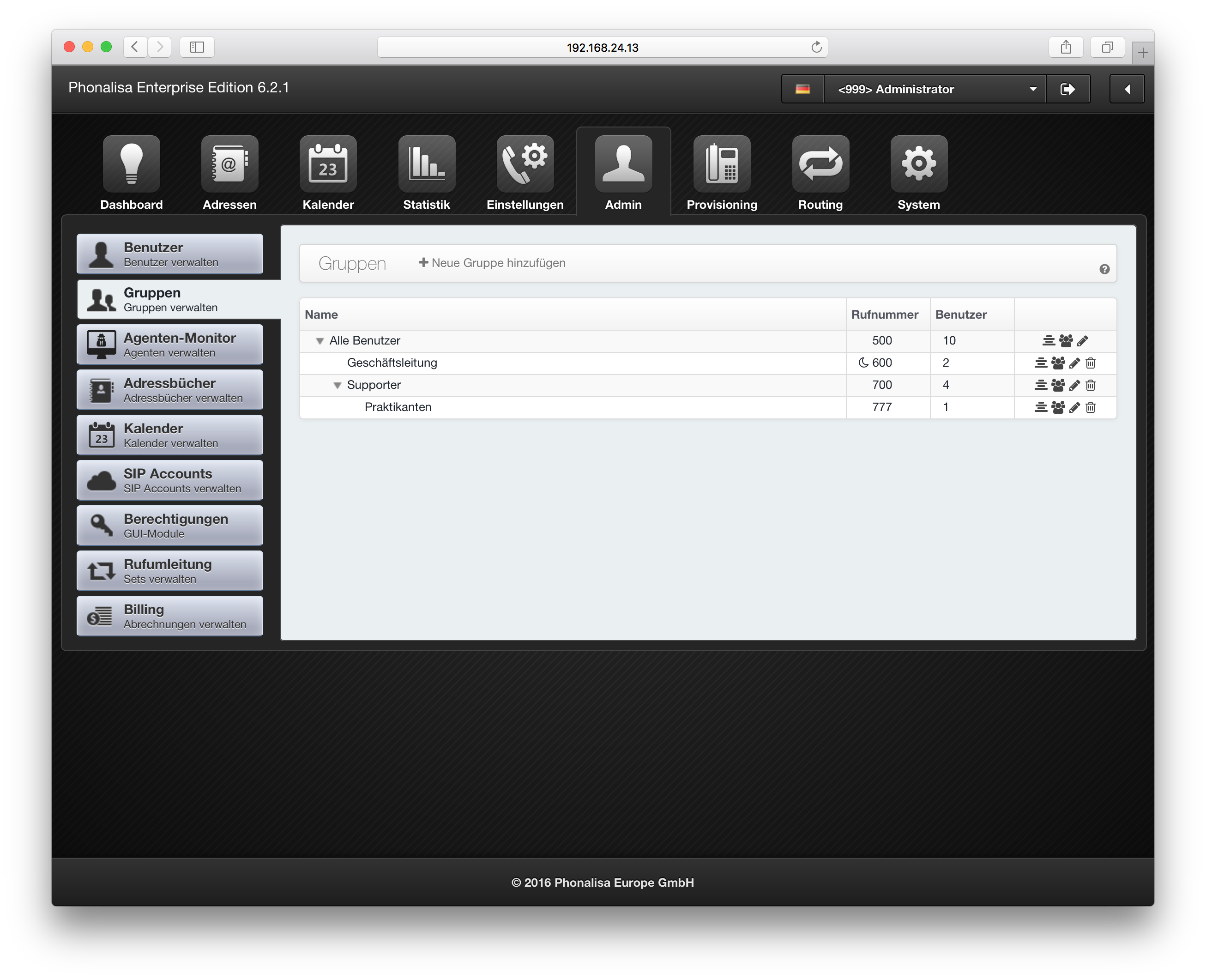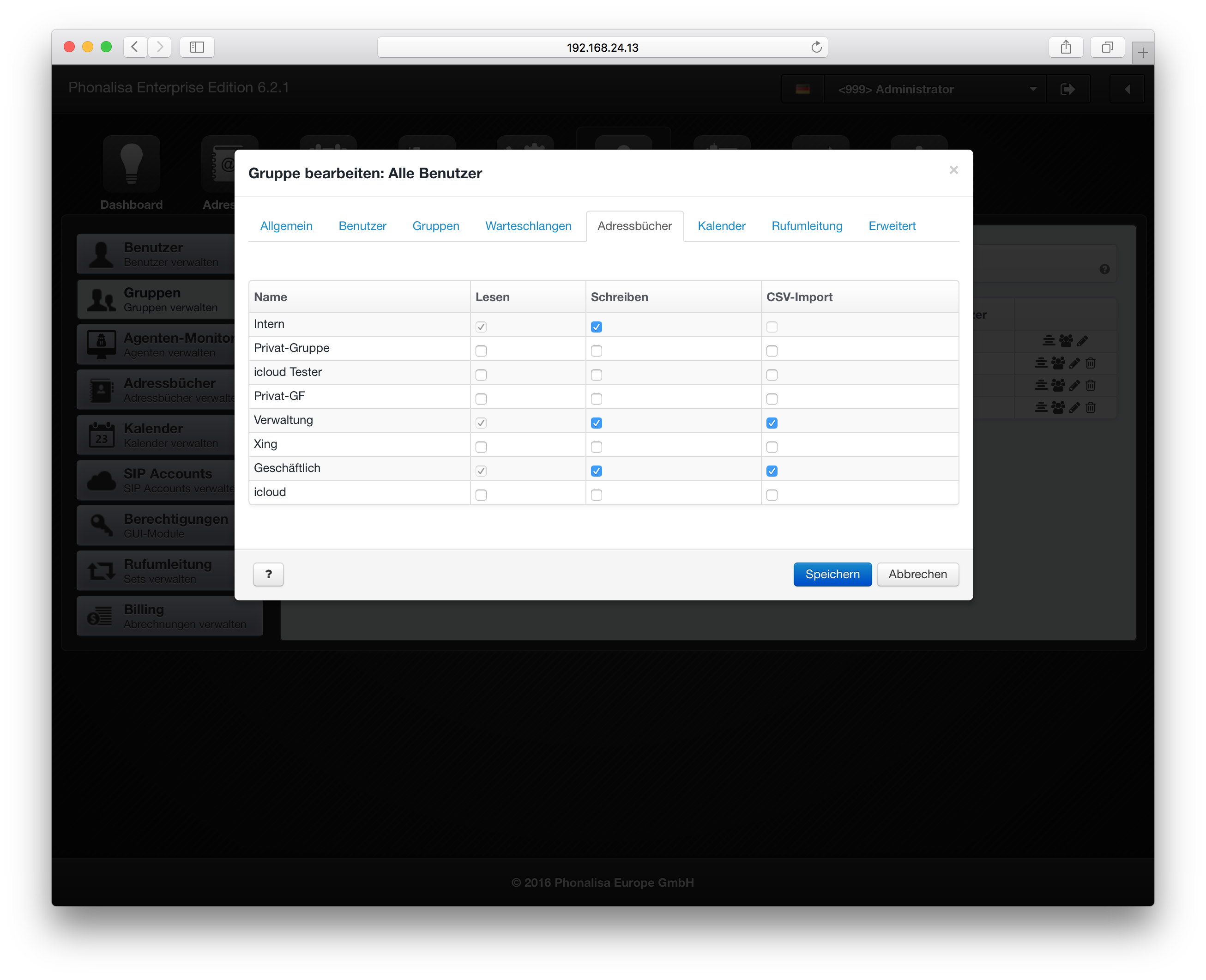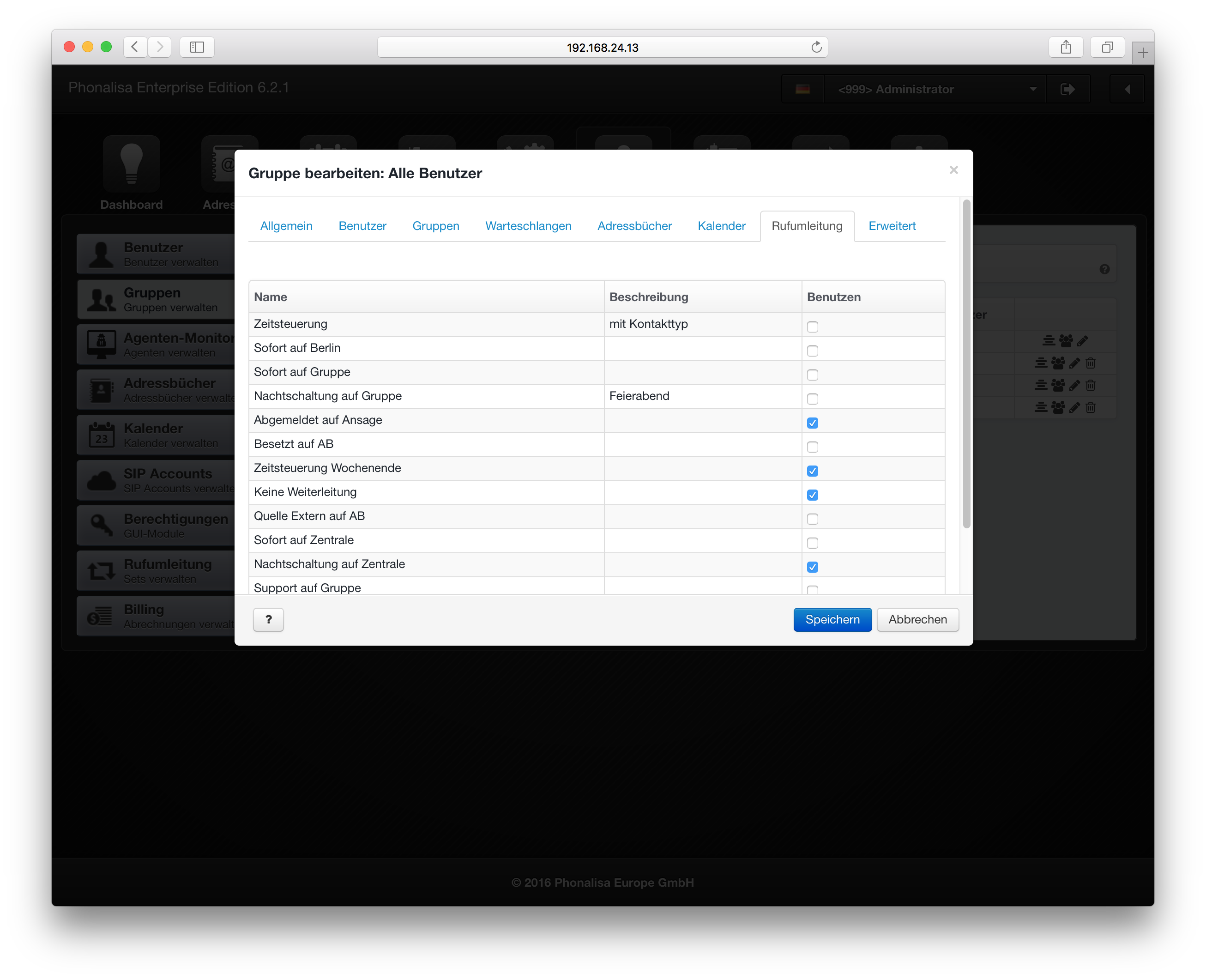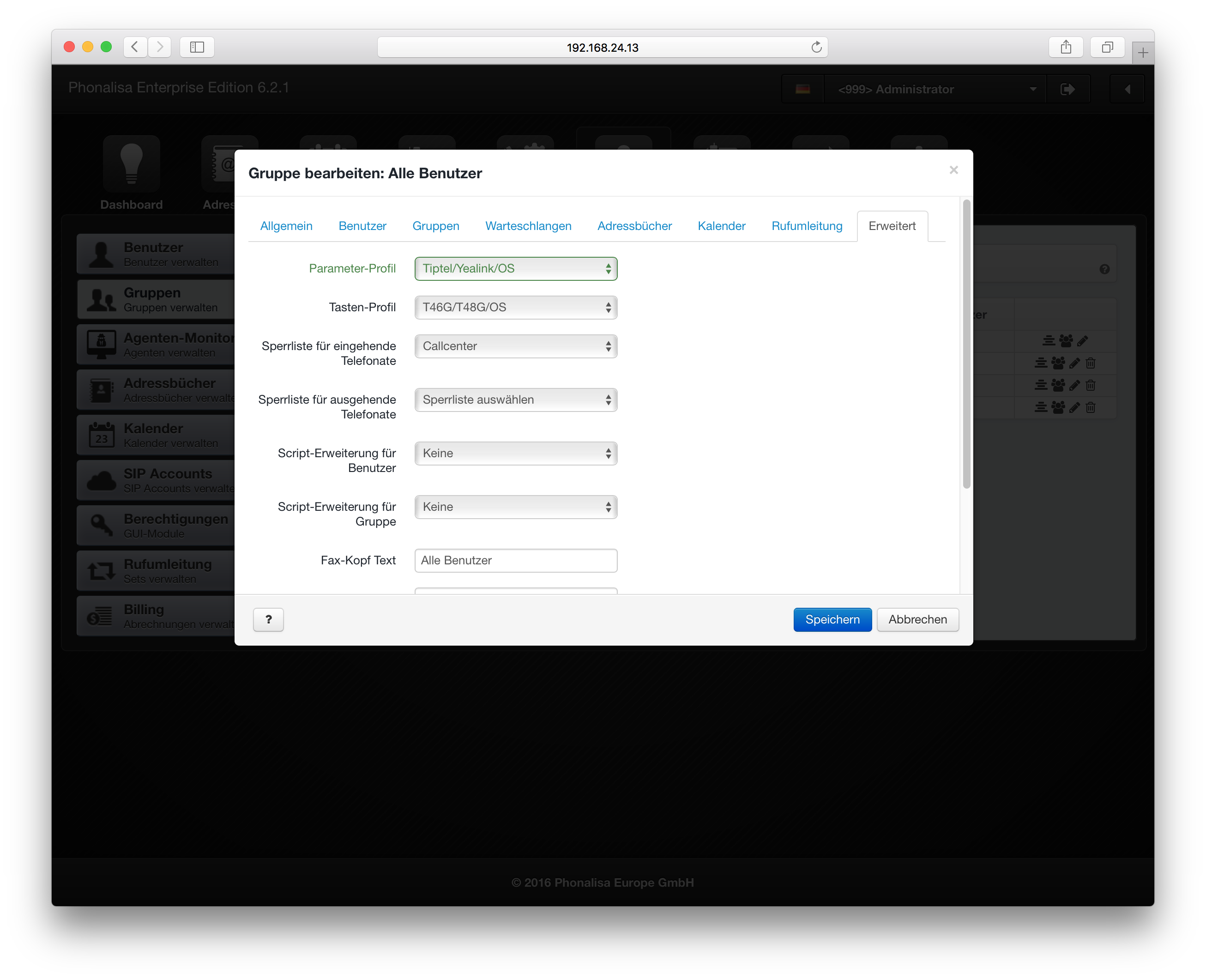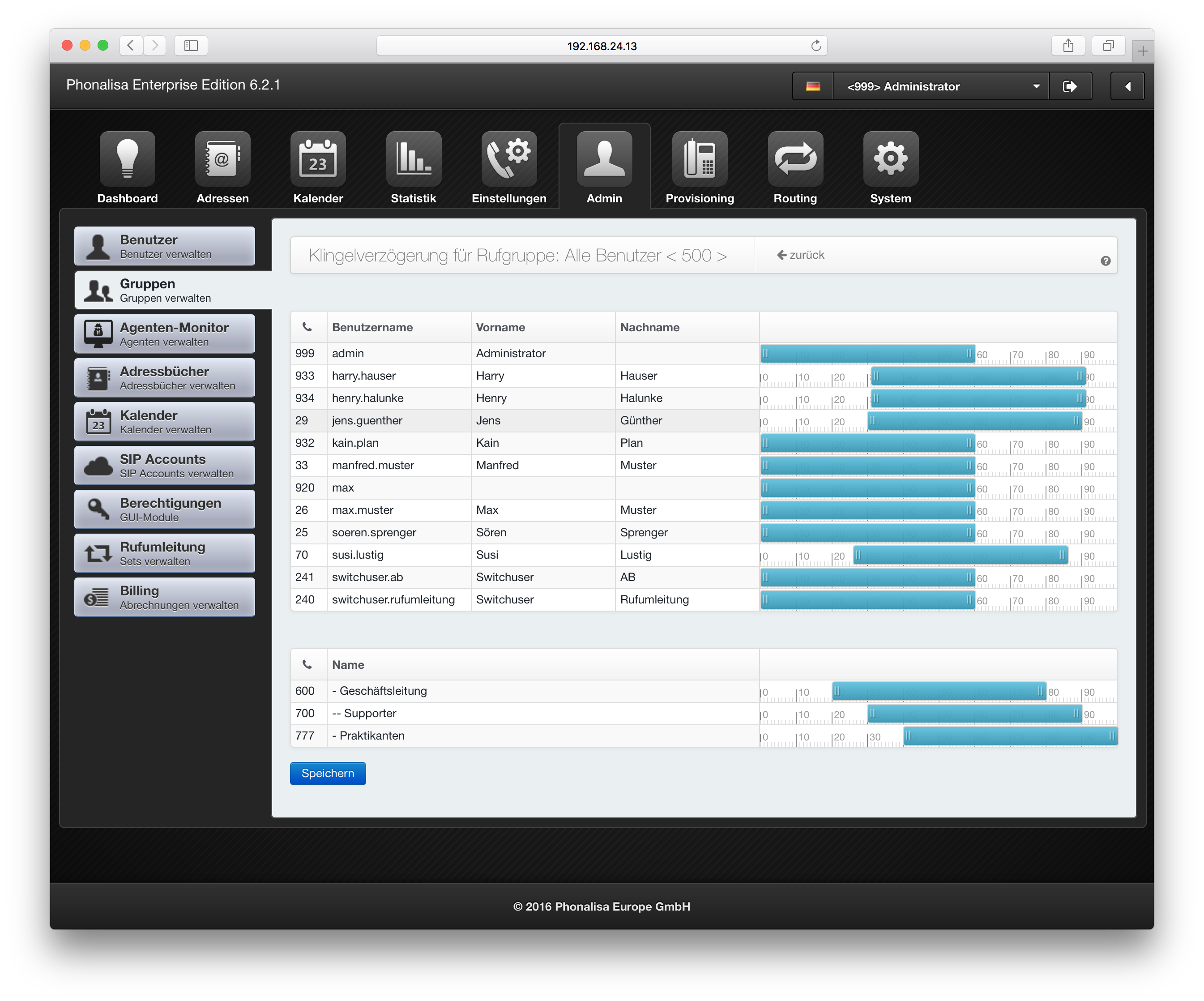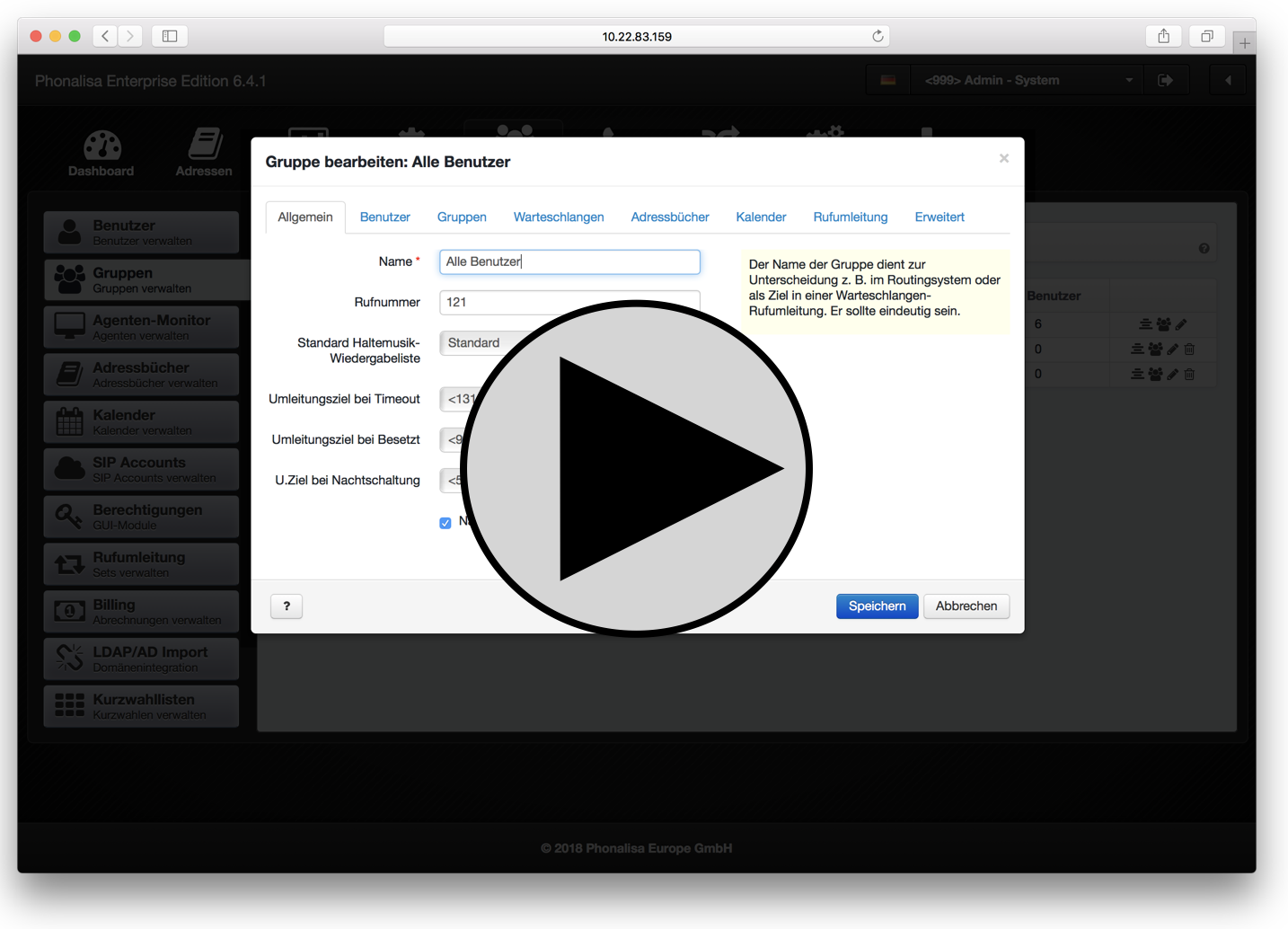Simple configuration
- Via the Phonalisa web interface you can quickly and easily create and edit any number of groups.
- Each group can have its own extension to make you available for internal and external calls.
- You can specify one Hold music track list per group, define a central drop point, a Fax header text and a Fax header number and whether the group is allowed to use the Billing (billing system).
- Users can be added or removed from a drop-down box to the group.
Fully flexible call diversion system for group calls
- Similar to the call forwarding system for users, you can also flexibly divert calls for groups.
- You can decide whether calls should be forwarded in Busy, Timeout or when Night answer is activated.
- The targets are freely definable. You can select internal extensions, other groups, voice menus, queues or call groups.
The group permissions
- The setting options of the authorization system are extensive.
- Authorizations include the Sudo function, the Monitor function, the Pickup function, the Statistics function, the Intercom function and the Listen function.
- The functions are applicable to the own group and to the members of the other groups.
- For example, if the Pickup function is activated, you can transfer calls from other group members to your telephone. If you have also set the pickup authorisation to another group, you can also pick up calls from the other group.
Authorizations for Queue Functions
- You can also use the group system to set whether you can view the statistics of individual or multiple queues.
- In this way, individual user groups can prohibit access to the statistics.
- You can also specify which group may and may not use the Agent Monitor.
Group inheritances
- Inheritance plays an important role in the Phonalisa group system.
- You can define “parent and child groups“.
- The child groups inherit from the parent groups.
- By “drag&drop” you can change the hierarchy of the groups.
- If calls arrive on a parent group and nobody answers, the call is transferred to the child group. Provided that a phone number has been stored.t.
Address books and calendars in the group system
- You can also configure access to the calendars and address books via the group system.
- For example, it is possible that individual groups only get read access in address books, while other groups get read and write access.
- You can create any number of group address books and group calendars per group (license dependent).
Call forwarding sets for group users
- Via the admin area on the Phonalisa web interface, you can any number of redirection sets for the whole system.
- You can, for example, store call diversions in the case of busy calls, forwarding to AB´s or time-related diversions after business hours.
- The configuration options are as flexible as in the user call forwarding system.
- You can then activate these sets in the groups >activate. So the users of a group have the same call forwarding scenarios to choose from.
- The saves a lot of administrative time.
Phone settings for all members of a group
- In order for all members of a group to be able to use the same telephone key profile on their phones, you only need to store the corresponding profile in the group.
- The same applies to parameter profiles.
- Block lists can also be stored individually for each group. For example, you can prohibit individual groups from calling mobile numbers.
Ring delay for group calls
- Using a slider you can set exactly when a user’s phone should start ringing and how many seconds it should ring.
- This makes it possible for individual telephones to enter or accept a group call ring immediately and others delayed, e.g. after 10 seconds.
- The Ring Delay is applicable to all created groups, provided – a phone number is stored.

